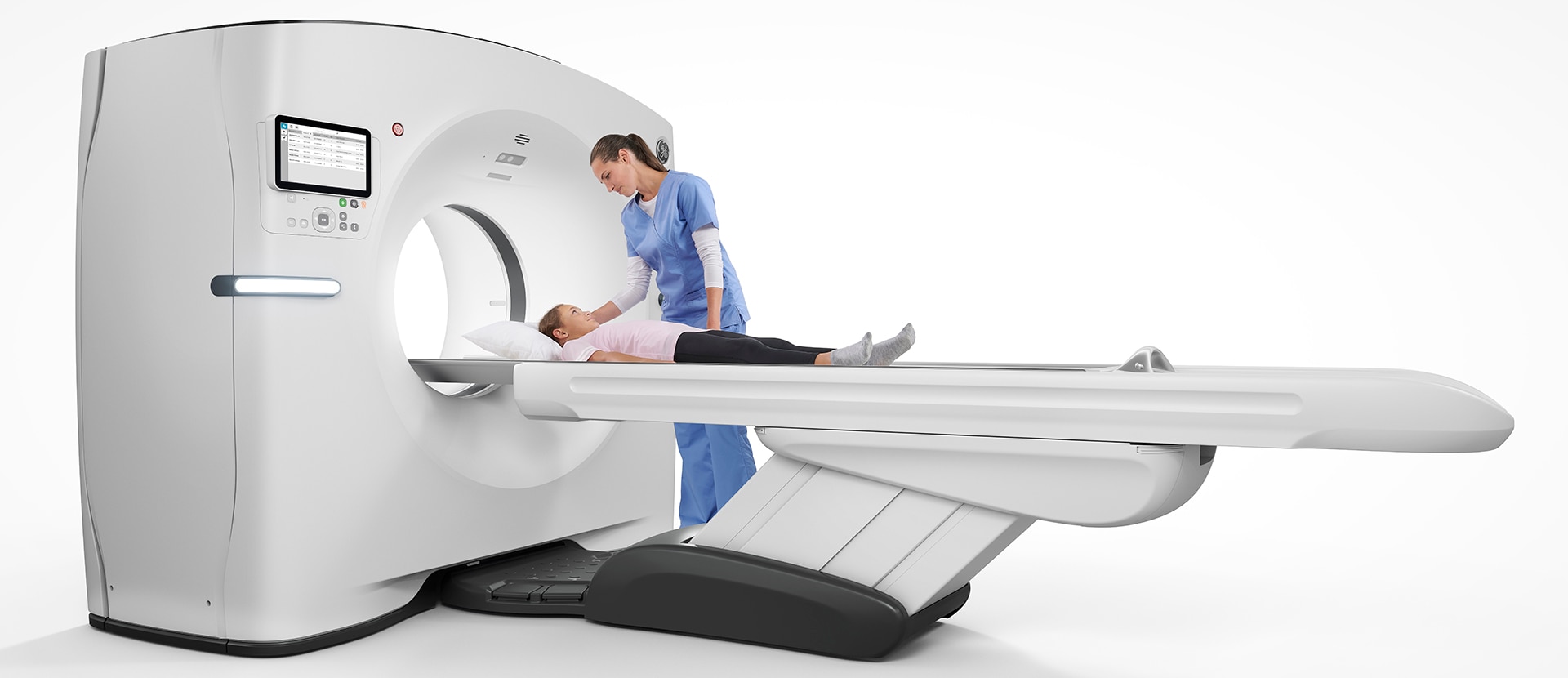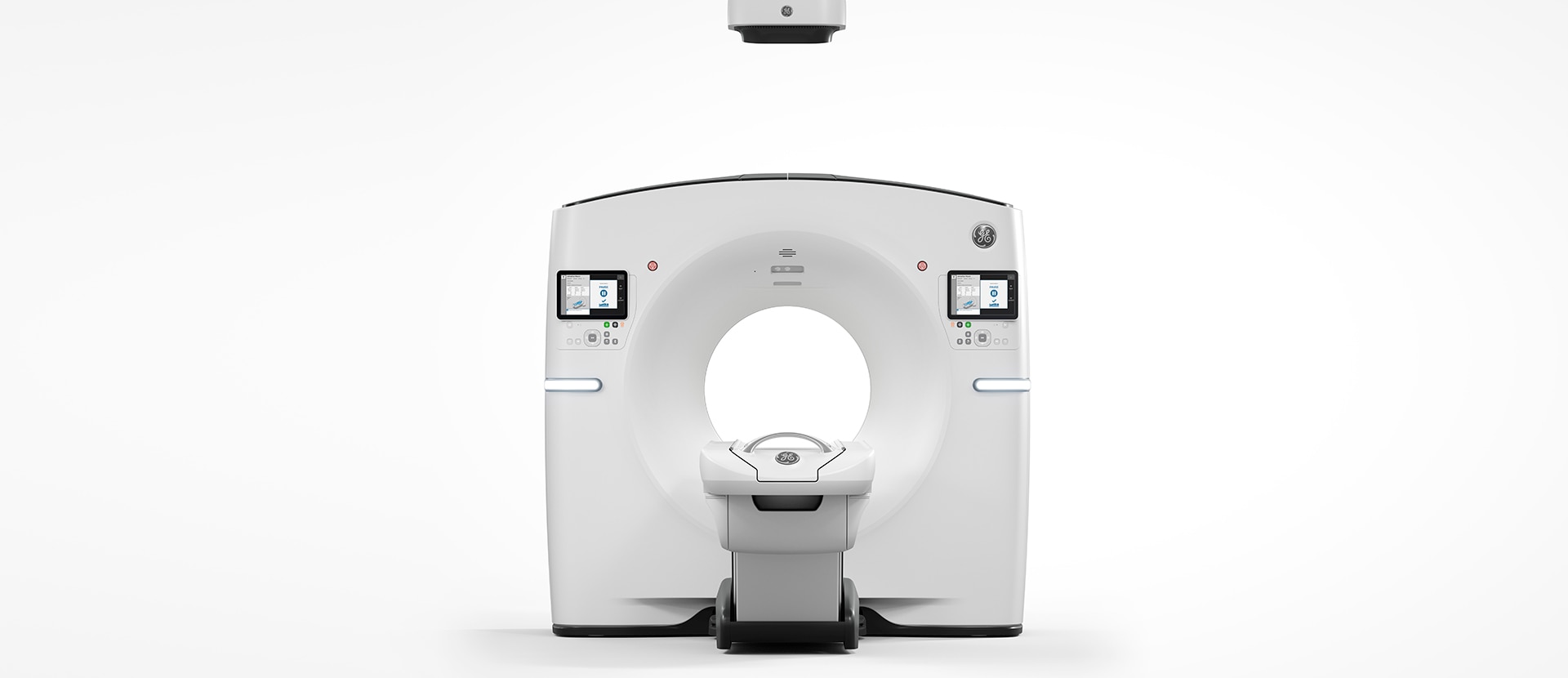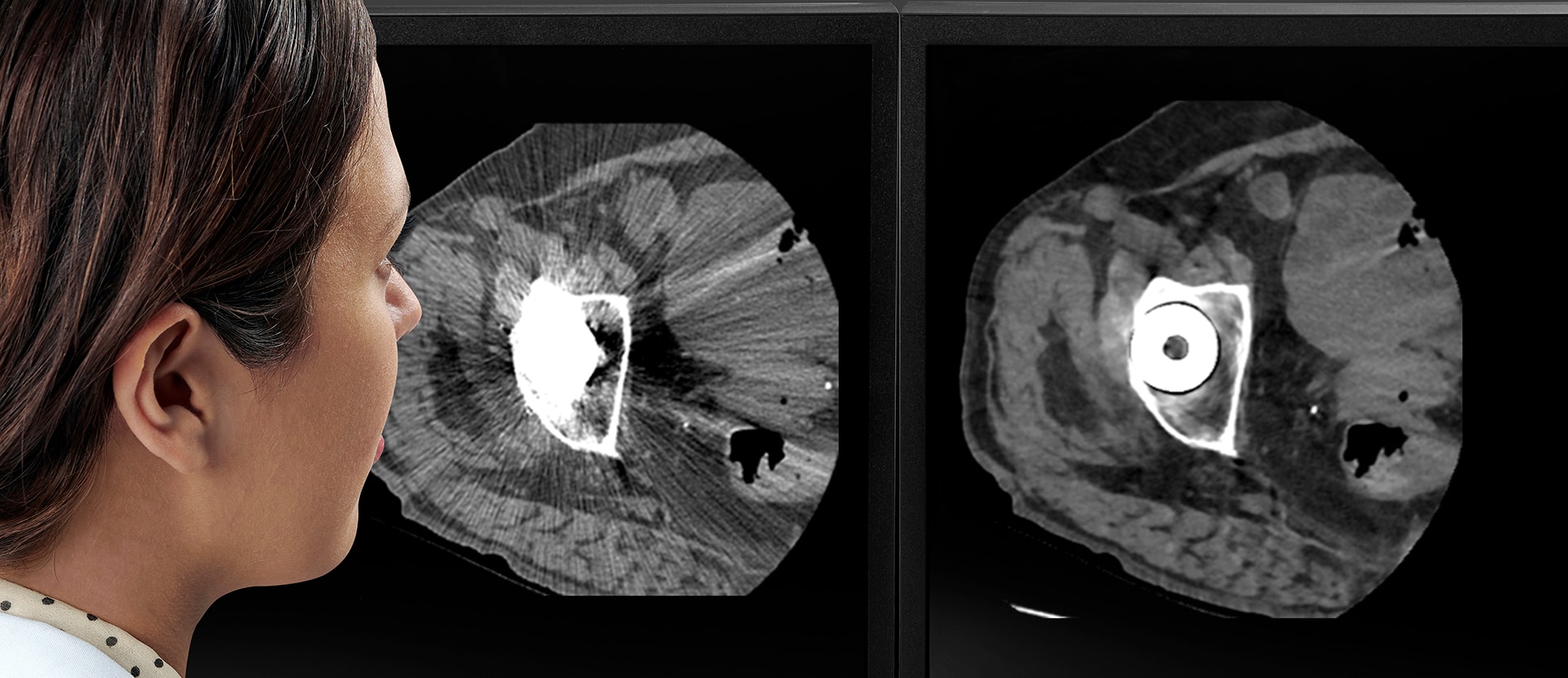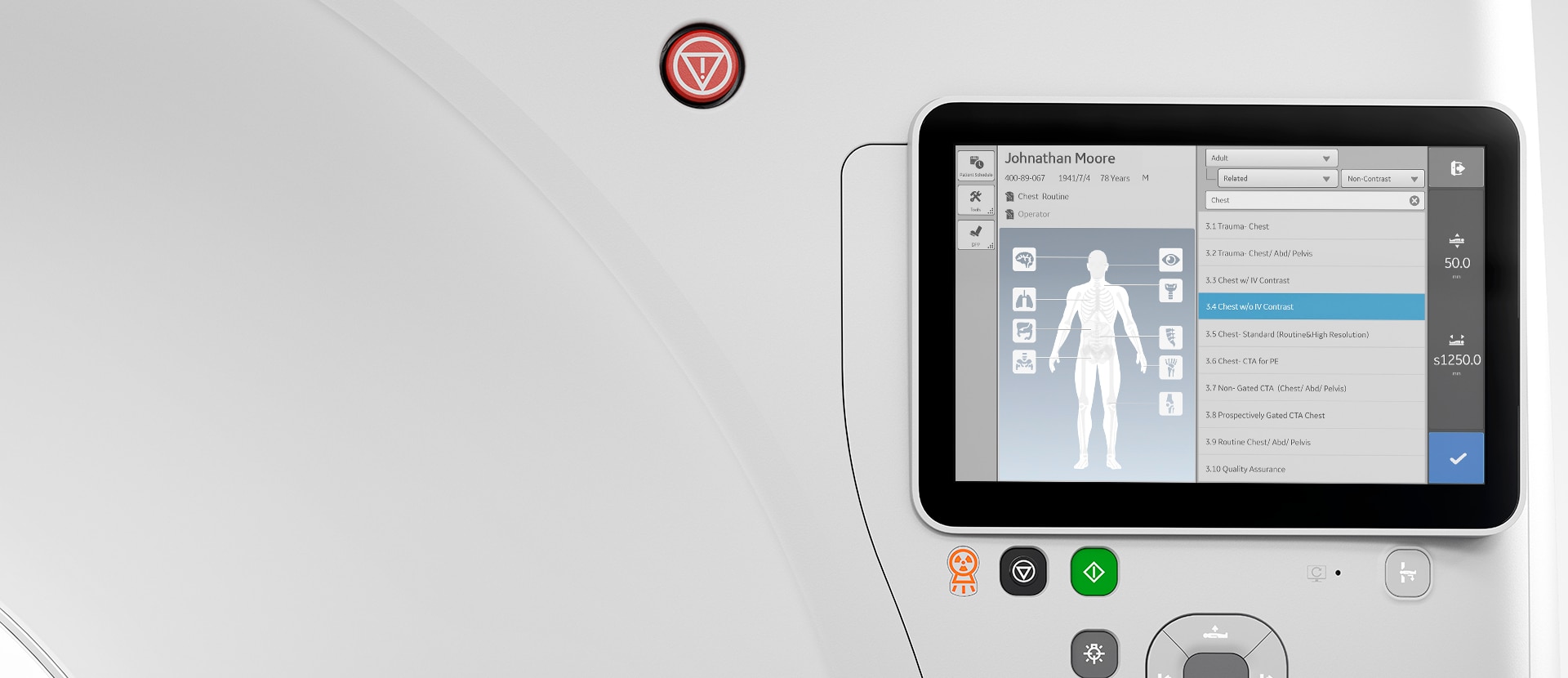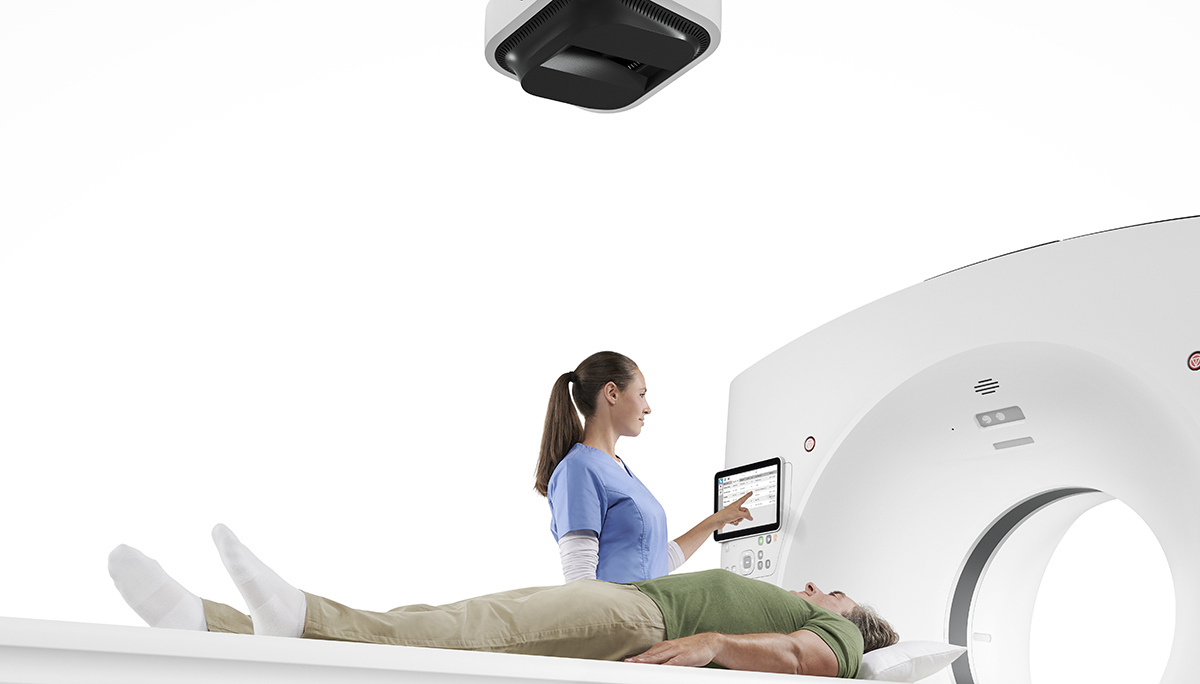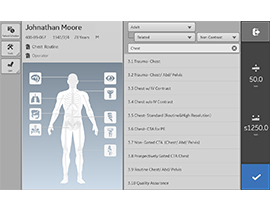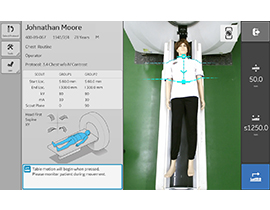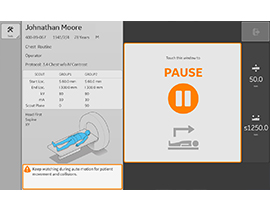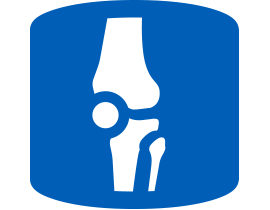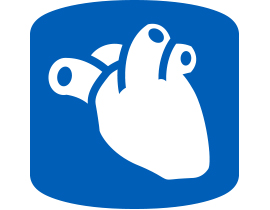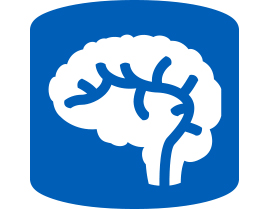No matter how you look at it, all patients are at risk of being mispositioned. When a patient is mispositioned, it may lead to up to a
38 percent increase in dose1
and up to a 22 percent increase in image noise2
. Positioning challenges are difficult to resolve because
they can stem from a combination of variables, including the inherent inconsistency of a manual workflow, patient discomfort and
technologist experience.
Our innovative AI-based Auto Positioning* completely automates this step. The Xtream camera uses real-time depth sensing
technology to generate a 3D model of your patient’s body. Then, using our deep learning algorithm, Revolution Maxima pinpoints the
3D center of the scan range and automatically aligns it with the isocenter of the bore. With one click, Auto Positioning uses all of this
information to automatically center your patient for a completely hands-free positioning experience.
Auto Positioning streamlines your patient setup and, most important of all, frees up your technologists so they can focus on making
your patients feel more comfortable.
*Auto Positioning is 510(k) pending at FDA. Not available for sale in the United States.
